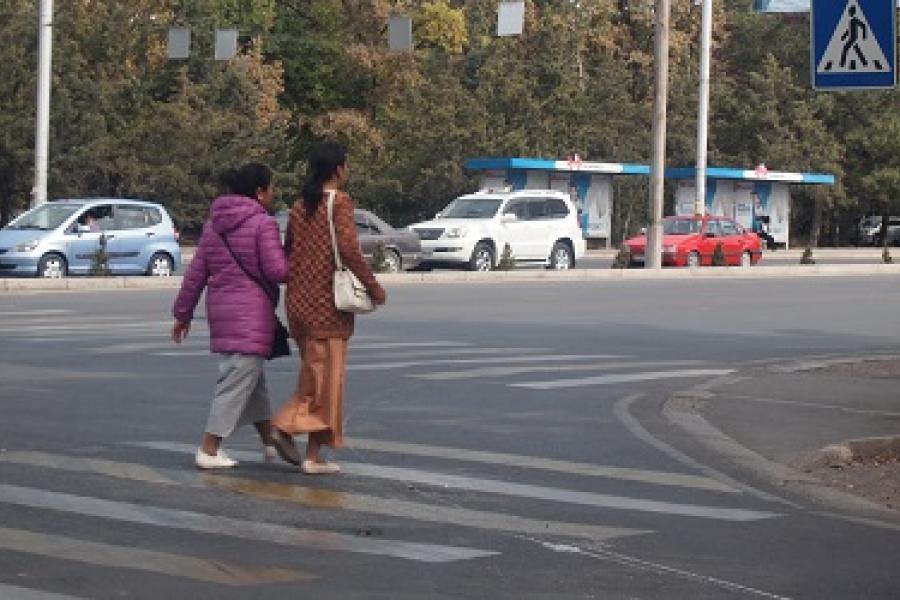Road safety: Kyrgyzstan sees decrease in deaths
22 January 2018
- A policy dialogue on road safety in Kyrgyzstan in October 2016 resulted in many initiatives to improve road safety. A year on, Deputy Minister of Health Dr Amangeldy Murzaliev invited 30 stakeholders from across Government, health service providers, the police force, Parliament and nongovernmental organizations (NGOs) to assess the progress made.
- WHO organized the meeting with the Ministry of Health as part of the biennial collaborative agreement between the 2 bodies.
Great progress towards road safety but more work to be done
Presentations on the current road safety situation in Kyrgyzstan from the Ministry of Health, Ministry of Interior, the police and NGOs confirmed a decrease in deaths in road traffic accidents.
Dr Murzaliev informed participants that the Government had given the topic of road safety high priority, with the Prime Minister leading the commission on road safety.
With the assistance of WHO, a legislative review of the laws on risk factors such as speeding, drink–driving and not using safety equipment was conducted. The outcomes of the review were debated at the policy dialogue in 2016. Recommendations from the 2016 policy dialogue were put to Parliament, which then proposed legislative amendments to increase penalties for speeding, drink–driving and not using safety equipment.
Dr Murzaliev shared that great progress had also been achieved with regard to the health system response to traffic accidents. “In order to ensure the availability of medical assistance to those injured as a result of the road crashes, 376 medical centres have opened to provide emergency medical care,” he continued.

Save LIVES technical package
Addressing the risk of death in road traffic is fundamental to achieving the Sustainable Development Goals (SDGs). SDG 3.6 sets the target of halving the number of global deaths and injuries from road traffic accidents by 2020.
To support countries in achieving this target, WHO has emphasized the importance of the systems approach. Save LIVES, a technical package developed by WHO, was identified during the meeting as a tool for reducing death on the roads. The package describes 22 interventions embedded within 6 major areas:
- speed management;
- leadership on road safety;
- infrastructure design and improvement;
- vehicle safety standards;
- enforcement of traffic laws; and
- survival after a crash.
Dr Jarno Habicht, WHO Representative in Kyrgyzstan, said, “There are a lot of initiatives in this technical package, from which it is possible to choose the measures that are most suitable for Kyrgyzstan. Traffic crashes and their consequences can be reduced if each person maintains a culture of driving while observing the rules of road safety. For example, 70% of lives can be saved by simply fastening seat belts, and children’s injuries and deaths can be avoided by using children’s seats.”
The meeting ended with participants requesting WHO support to implement the Save LIVES package in 2018 and 2019. This will help Kyrgyzstan attain the target of the Decade of Action for Road Safety of a 50% reduction in road crash deaths by 2020.




